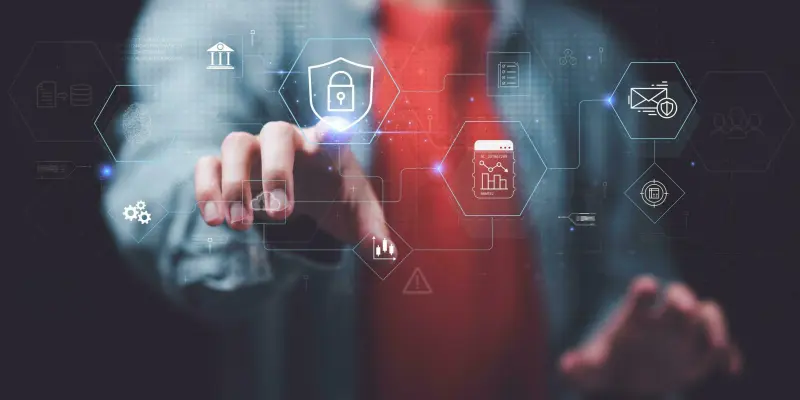In an era where connectivity is edging closer to a fully integrated digital ecosystem, cybercriminals are capitalizing on unconventional entry points to circumvent advanced security measures. A recent example illustrates how a ransomware group, known as Akira, leveraged a Linux webcam to bypass endpoint detection and response systems. The organization’s initial attempts to infiltrate traditional endpoints were thwarted by effective EDR software, forcing them to change strategies and focus on exploiting vulnerabilities within an Internet of Things (IoT) device. This incident underscores the complex and evolving landscape of cyber threats, urging the cybersecurity community to enhance adaptive strategies and remain vigilant against inventive exploitation techniques targeting IoT and operational technology environments.
Endpoint Detection Challenges
Persistent Threats and Innovative Approaches
The vulnerabilities inherent in IoT devices have begun to overshadow conventional security models, necessitating reevaluation and tightening of cybersecurity practices. IoT, initially perceived as a secondary security concern, is now at the forefront, primarily due to its open nature and widespread adoption. Akira’s evasion of endpoint defenses through a vulnerable webcam highlights how cybercriminals exploit gaps left unchecked by traditional security frameworks. As IoT devices proliferate, opportunities for attackers grow exponentially, making it clear that as technology evolves, so must the methods to protect it. Ensuring robust defenses requires not just sealing existing gaps but foreseeing and countering unforeseen threats, urging a paradigm shift in cybersecurity strategies.
Impact on Organizational Security Protocols
Organizations facing this innovative threat landscape must adapt by extending their security protocols beyond conventional endpoints. By integrating patch and vulnerability management across IoT and operational technology environments, they fortify against burgeoning threats aiming to exploit any weakness for financial gain. This adjustment demands a holistic approach where IoT security becomes intrinsic to organizational cybersecurity practices rather than peripheral considerations. Network restrictions and effective segmentation further act as critical deterrents against such breaches, providing an added layer of protection for sensitive digital assets. As barriers to entry for cyber threats continue to lower, organizations must prioritize resilient defense strategies to safeguard their operations comprehensively.
Evolution of Cybersecurity Strategies
Adaptation and Anticipation
Sound cybersecurity strategy mandates staying one step ahead of cybercriminals, requiring continuous adaptation to anticipate sophisticated attack methods. Steve Ross, the esteemed director of cybersecurity, emphasizes the necessity for the community to prepare for intricate, creative threats. This anticipatory mindset results in strategic innovations that incorporate emerging threat intelligence into routine security operations. Empowering the cyber community through simulations, threat modeling, and proactive assessments strengthens the collective ability to deter imminent threats. By implementing forward-thinking strategies rooted in diligence and foresight, entities can better mitigate risks associated with the shifting dynamics of cyber threats and focus squarely on securing tomorrow’s technology.
Bolstering Cyber Defenses
Organizations genuinely committed to mitigating the impact of ransomware and relentless cyber threats must prioritize integrating multi-layered security measures that address vulnerabilities across all digital touchpoints. Emphasizing endpoint protection alone is insufficient; tailored solutions catering to distinctive device ecosystems are necessary. Advanced analytics and machine learning can significantly aid in identifying and thwarting sophisticated attack vectors, turning robust intelligence into proactive defenses. Furthermore, cyber hygiene practices like regular updates, patches, and training bolster a culture of security, minimizing exposure to exploitations. By adopting comprehensive and inclusive approaches, organizations pave the way for a secure, resilient digital ecosystem, better equipped to handle tomorrow’s security challenges.
Future Considerations for Cybersecurity
As cybercriminals continue to evolve, the imperative lies in deploying security measures capable of anticipating, rather than reacting, to threats. Cybersecurity professionals and organizations must engage in continuous learning and intelligence gathering, ensuring preparedness against unforeseen exploitations. The ever-expanding boundaries of technology demand innovative security philosophies, prompting collaborative efforts in developing and sharing threat intelligence across sectors. Adoption of AI-enhanced analytics and real-time monitoring can fortify defenses, encouraging industry-wide dialogue on best practices and effective countermeasures. By embracing innovation while prioritizing vigilance, both organizations and the cyber community can maintain a secure digital frontier amidst an unpredictable and evolving threat landscape.

